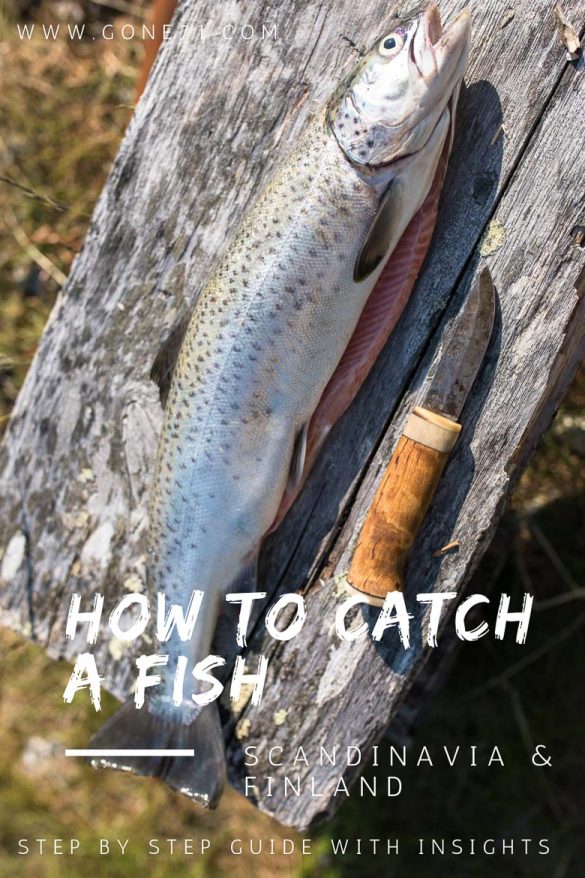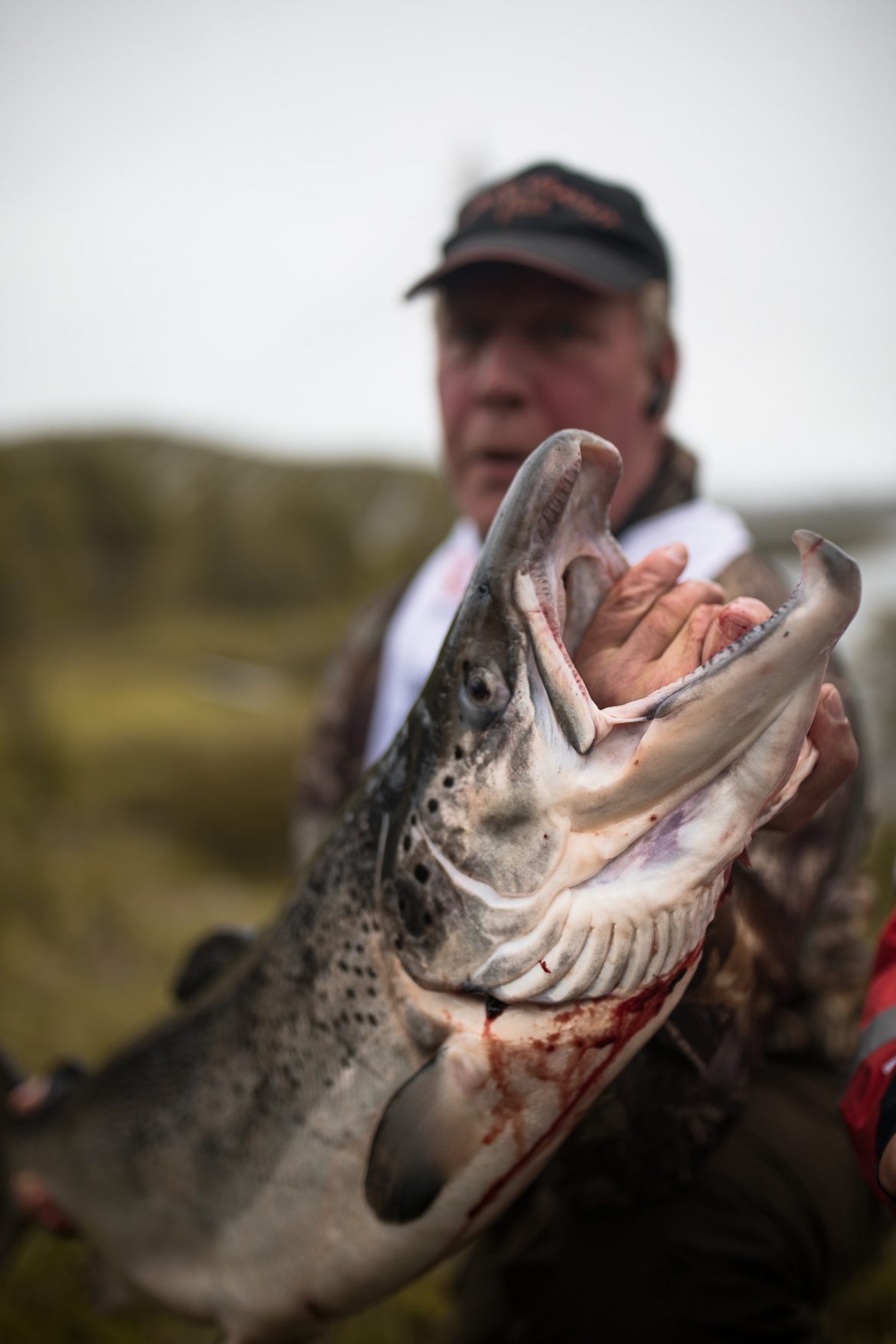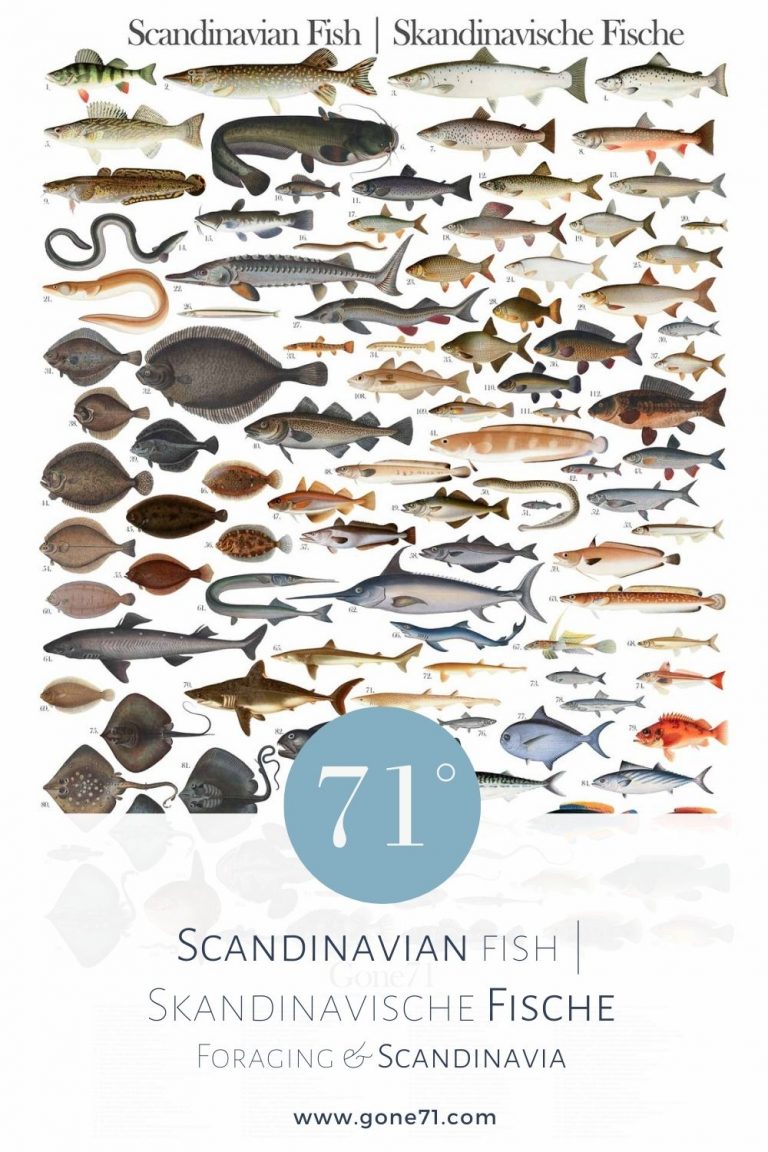Plan a road trip or travel through Scandinavia? Even move there permanently? Want to survive on fish in the wild but don’t know how yet? We can help you out!
If the northern countries are known for one thing despite mosquitos and trees it is fish. Welcome to the lands of salmon, char and trout. If you are not happen to be a vegetarian and like fish you should definitely get one yourself.
Now, there are a lot of species of fish out there and the big question is which one to tackle. So first things first: Know your prey. Fish species vary throughout the Northern countries depending on where you are. Some species are more common then others and some species are easy to catch while others can give you a hard time. The simplest way would probably be to book a guided fishing tour (which are available all over he place) but besides the costs what would be the fun in that? We are here to learn something about fishing in Scandinavia on our own, aren’t we? No matter if you already have some experiences or if you are a total newbie to this area of expertise we got you covered.
First steps
As a basic requirement for this task we will need a fishing rod, a reel, line and some lures. If you are new to the world of hunting fish and just want to give it a try we would recommend to opt for an all inclusive fishing combo that you can get in every fishing store or even big supermarkets throughout Scandinavia (they are everywhere). More on this later!
For a beginning lets keep things simple. If your main goal is to catch a fish you first have to identify which fish is available in the region that you are travelling. In the northern coastline of the Barents Sea and the fjords, pollock is one of the easier games. If you happen to be in the Southern and Middle parts of Finland you might want to opt for pike or perch in one of the 187,888 lakes (if you define lake as a body of water larger than 500 square meters) of the country. If you roam the northern parts apart from the Norwegian coast you have entered the land of the trout, char, grayling and of course the mighty salmon. Each fish requires a slightly different approach. The best way to get some knowledge about local fish is to ask some locals. Usually almost everyone can tell you in decent English what kind of fish you can expect and where you should go.
Can I fish wherever and whenever I want?
No! You are allowed to fish along pretty much all coastlines in Scandinavia from the shore or also from boat if you have one without licenses or permission. You can even try to catch a salmon downtown of Stockholm (which is actually a common thing to do) without concerns for a license. That’s the good news.
If you are planning to fish lakes and rivers things get unfortunately a little bit more complicated, especially because all three of the Northern countries have different regulations on this. Once you have figured out which fish you want to catch, you also need to be aware of legal sizes and protection times throughout the year. Usually around 1st of September until the End of November most of the trout fish become protected. Also there are different regulations on what kind of equipment, lures and techniques are allowed varying on the area you are fishing in. Make no mistake, it is your responsibility to find out the dates of the fishing season and any other rules that apply in a particular river system. In some parts there are very strict regulations so do your homework before setting out and get yourself into trouble. Fines, especially in the Norwegian salmon rivers up North can go in the thousands of Euros!
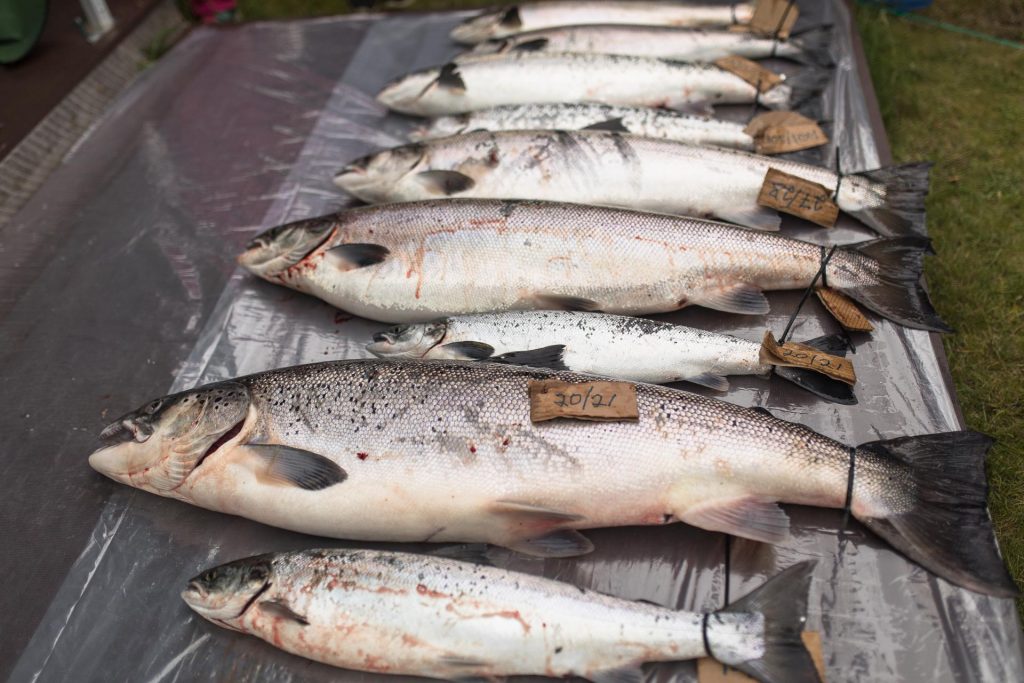
For beginners who want to get here first fishing experiences we would recommend coastal fishing for pollok or cod especially if you are in the Northern parts of Norway. If you happen to be in Finland predatory freshwater fish as pike or perch in the Finnish lake lands are also a great option for your on going fishing career.
Fishing regulations Finland
In order to go legally fishing in Finland you need to acquire a state regulated fishing license that can be bought in R-Kioski shops throughout the country. It’s fairly cheap, easy to come by and the huge upside is that you are allowed to fish in almost all of the Finnish lakes which gives you especially access to pike, perch and zander. If you want to fish streams and rivers for greyling, trout or even salmon, you will need a special permit for each permit area in addition that can usually be purchased locally at tourist and nature centres, fishing stores and online at www.eraluvat.fi/en. Fish like pike and perch can be fished throughout the whole year and have also no minimum size so these are fish we recommend to pursue in the beginning of your Scandinavian fishing career.
Fishing regulations Sweden
Unlike Finland, Sweden and Norway do not have a basic state issued fishing license. Instead you need to purchase a license for every permit area you want to fish. All the information you need can be found at www.ifiske.se. Many popular fishing places have also information points with detailed instructions how to purchase a license via mobile phone. A good advice is usually to contact one of the local tourist offices or nature centres that can give you detailed advice.
Fishing regulations Norway
It’s complicated! For freshwater fishing you need a license sold by the property owners. Unfortunately there are a huge number of different license areas throughout the country. Some are state-owned, some are private and it is not uncommon that one fishing license covers only a single section of a river. Researching where to get which license can give you a bit of a headache in some cases. Furthermore, if you want to fish for migratory fish as trout, sea trout, salmon or char you also need a state license from the Norwegian Environment Agency (fiskeavgift) (https://fiskeravgift.miljodirektoratet.no). Such can be acquired online or in every Norwegian Post Office for around 30 Euros.
If you want to fish in Norwegian river systems, especially in the salmon rivers of Finnmark you need to disinfect your fishing equipment prior to setting out for your fishing adventure. This is mandatory to prevent the salmon diseas gyrodactylus salaries from spreading and strictly enforced. There are usually many places in every region where you can disinfect your whole equipment and you have to carry proof of disinfection with you at all time fishing.
So if you intend to start a fishing career in Norway we would advice you to go in one of the very helpful tourist offices in your region for some advice on fishing licenses and regulations.
The Scandinavian fish poster
We recently maden a visual guide of some of the most common Scandinavian fish species. Have a look for yourself.
The who is who of Scandinavian fish
- Arctic Char (nor.: røye; swe.: röding; fin.: rautu/nieriä; dt.: Saibling) The mighty arctic char is one of the most beautiful fish and well known for the red bellies the male specimen get when getting mature. It also happens to be one of the most delicious species swimming around but can be hard to catch. They live mostly in cold alpine and arctic waters and healthy populations can be found in the mountain regions of Swedish and Finnish Lapland e.g. the area of Kilpisjärvi and especially in the Northern mountain lakes of Finnmark.
- Cod (Gadus morhua) (nor.: torsk; swe.: torsk; fin.: turska)
From a commercial viewpoint, cod is one of the most important fish for the Scandinavian fishing industry. If you travel around the northern coastal parts of Norway you will find many places where you can see huge wooden frames full with more or less dried cod. This fish lives close to the bottom and prefers deeper waters that usually require a boat but it’s also possible to catch them from the shore if you know where to look for them. Good places to fish for cod from the shore are usually peers and moles or natural formations from where you can reach deeper waters along the Fjords. - Grayling (Thymallus thymallus) (nor, swe.: harr; fin.: harjus; dt.: Äsche)
This freshwater fish belongs to the salmon family. Its body is covered with silver-greyish scales topped with a prominent dorsal fin. The grayling prefers cold, clean, running riverine waters and they are found throughout the northern parts of Scandinavia. Some of the best fishing grounds for grayling can be found in Finnish and Swedish Lapland. It can be a great fish to start your fly fishing career. - Perch (Perca fluviatilis) (nor.: abbor; swe.: abbore; fin.: ahven; dt.: Barsch)
This predatory fish is one of the most common fish that can be found throughout Scandinavia with exception of the northern most parts of Scandinavia. They inhabit rivers, lakes and even the brackish waters of the Baltic and Bothnian Sea, especially the Finnish archipelagos. This fish can get very old and even seemingly small specimen can be several years of age. It tastes delicious and is a very popular game fish. - Pike(Esox lucius) (nor.: gjedde; swe.: gädde; fin.: hauki; dt.: Hecht)
The greed of this fish knows little limits. It is a torpedo shaped predator from head to tail, equipped with hundreds of razor sharp, backward-pointing teeth. The best fishing grounds for pikes in whole Europe can be found in the lake land of Finland and parts of Southern Sweden. Some consider this fish as delicious others despise it but because they are so willingly in taking lures they are a great game. Keep your fingers away from their teeth though if you want to keep them in one piece! - Pikeperch or Zander(Sander lucioperca) (nor.: gjørs; swe.: gös; fin.: kuha)
Zander belong to the family of perch but grow considerably bigger. They are very tasty but also more demanding to catch. They are mainly hunted by trolling or jigging from a boat in the deeper waters of lakes but can also be cought from shore in certain places. Very well known for its vast Zander population for example is the Tampere region but usually you can find them in he whole lake land district and also in the brakish water of the coastal areas. They are most active in twilight when they come close to the surface to hunt. During the day you have to find them in the deeper areas of lakes and also bigger rivers. If you are starting with your fishing experiences this fish may give you a hard time. - Pollock(Pollachius virens) (nor.: sei; swe.: lyrtorsk; fin.: seiti ; dt.: Köhler/Seelachs)
This salt-water fish is in the same family as cod and can be easily cached from the shore in the coastal areas especially further north. Along with cod it is also the most important fish from a commercial fishing perspective in Norway. You’ll probably know the taste from the frozen junks of your local supermarket but you can not quite compare this to a fresh cooked catch. Unlike their bottom dwelling counterparts the cod, they hunt closer to the surface and you will find it probably much easier to catch one of these. Well, it’s no salmon but you can eat it and it is free to catch. - Salmon (Salmo salar) (nor.: laks; swe.: lax; fin.: lohi) This is undoubtedly the king among all fish in Scandinavia and you may consider working your way up little by little until you try to tackle this one specific species. Not only are there the most rules and regulations (often involving serious money for a license), you also might need some more advanced techniques and equipment if you want to play with the big boys. The latter quite literally in fact since you’ll find yourself mostly accompanied or even competing with a vast amount of fellow fishermen and –women professionally equipped down to the bone which can be an intimidating experience in itself. So it can make sense to work your way up from the bottom and gain some experience points with other species. Atlantic salmon can grow up to more than a meter and unlike its Pacific counterpart it can survive spawning and return to the sea several times. If you feel ready for this particular fish you will find some of the best salmon rivers are the Tana river (Tanajoki, Tanaelv), Laks river (Lakselv) or the Alta river (Altaelv). If you want to skip complicated licensing and disinfection you can consider one of the Finnish tributaries of the Tana river, the Utsjoki which is well known for good salmon and grayling catches. You can acquire licenses in the local supermarket on the spot and even ask for some recommendations. A popular spot is about 15 km South of the little border town Utsjoki where the main road crosses the river. Unlike in many other places where it is fly fishing only, you are allowed for lure fishing (using, spinner, spoons, wobbler etc…). One place to catch salmon for free is actually the town center of Stockholm at Strömgatan in the old town where you can legally try your luck.
- Sea Trout (Salmo trutta trutt) (nor.: sjøørret; swe.: havsöring; fin.: meritaimen; d.: Meerforelle)
Sea trout is basically a form of brown trout that converted to an anadromous (migrates on a regular basis between river and sea) lifestyle. It is definitely not an easy catch BUT since you can catch it from the coastal shore you do not need any license, which is a great upside. They have a very similar look to salmon and grow usually much bigger than their river dwelling counterparts. Sea trouts up to 4 kg are considered a normal catch in certain parts. The most common way to catch them from shore is by spin fishing. - Trout(Salmo trutta) (nor.: ørret; swe.: öring; fin.: taimen; dt.: Forelle)
Trouts are very popular and tasteful fish in Scandinavia and the name refers here more specifically to brown trout. There are also other species of trout as rainbow trout (not native and always stocked) and sea trout (trouts that migrate to the open sea). Trouts are mainly found in fresh riverine waters and thrive especially well in the northern parts of Scandinavia. They are mainly caught by lure- or fly-fishing and definitely worth a try since they will give you a decent meal.There are many more species of course but for a start you should be occupied for quite a while.
More detailed information on specific Northern Fish here:
Common fishing techniques for Scandinavian waters
The most common fishing techniques are fly fishing, spin fishing, angling with natural bait and trolling. We will give you a brief introduction in each technique but for getting to your goal to catch your first (Scandinavian) fish we will stick to spin fishing for now.
- Spin fishing is an angling technique where a lure (an artificial bait) is cast out and retrieved. The aim is to lure predatory fish out of their hide and trigger an attack. There is an uncountable number of different lures in all sizes, colours, shapes and even tastes and you can buy them all over Scandinavia to an extend even in most supermarkets. With little to no idea what you should look out one great approach is to find the next fishing shop, asking the vendor for advice on the lures that work best for your needs and the region you are in. This usually works wonders and may find your weapon of choice.
- Fly Fishing – strictly speaking this is also a method of spin fishing, however the equipment and set up is different that we treat is as a technique by its own. It is an angling method that uses an artificial fly to do the job. Some even consider fly fishing as a philosophy or an art form and strictly craft their flies themselves after an extensive research on the local fauna. This is a very aesthetic appealing form of fishing if done properly but can be quite challenging to learn. It is definitely not well suited for beginners but Scandinavia is nevertheless the place to be if you want to gain experience in this craft.
- Trolling – This is a fishing method where a fishing line is drawn through the water by boat. This is a very popular method for catching Zander in lakes but also for fishing for salmon in the bigger rivers. Unless you have a boat this might not concern you. If you have a kayak, kanu or similar rowing device you can try your luck in calm lakes for a start.
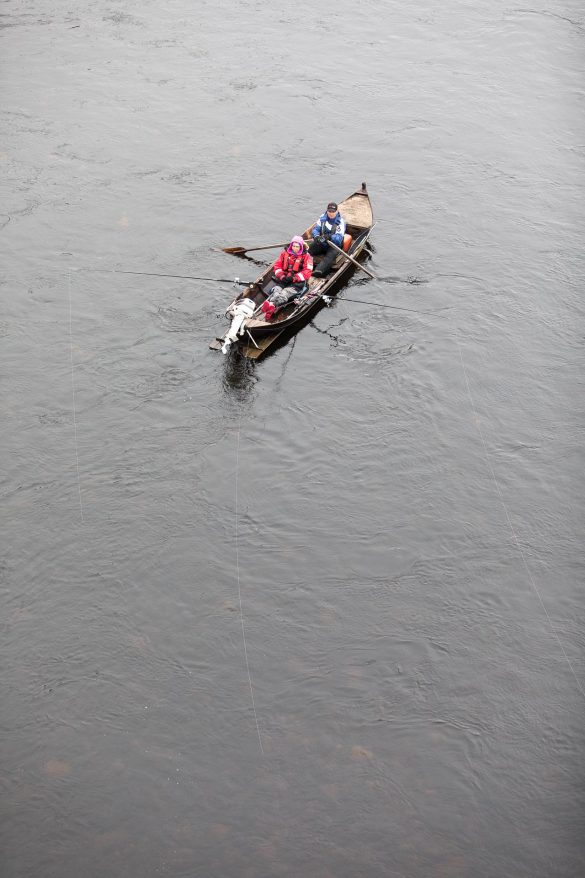
- Natural Bait – Everyone knows the classic worm! While this can catch you even salmon this is by far not the only natural bait. Despite worms, maggots and insects often small fish, squid or shrimps are used. Especially when fishing for cod you might consider pieces of fish, squid or shrimp as bait. Natural bait is usually put on a hook and cast out in the water where it stays for a certain amount of time or until you have fish.
Equipment
Remember your goal at this point. You want to be able to catch a fish in Scandinavia! If you play by the book you will need different equipment for different fish. Strong predatory fish like pikes will usually require a stronger rod and line than if you opt for smaller or more delicate fish as grayling or perch. For the latter you would normally opt for an UL (Ultra light) rod but that will obviously give you some troubles with bigger fishes as pike, bigger trouts or salt water fish. Unless you are not committed to one species you obviously have to make a compromise here if you do not want to spend the extra many for more equipment and/or carry it with you.
- Fishing rod – Harder rods are usually used for bigger predatory fish as pike or cod. Their advantage is that you can usually cast further and can well cope with the strength of bigger fish. The downside is, that you do not feel so well what is going on beneath the surface, how your lure is behaving or if smaller fish are biting. So for the beginning you will be better of with a lighter fishing rod. It is easier to cast and you have a much better feel if your spinner is turning, your wobbler tumbling and how fish attack the bait. If hard or light is indicated by the casting weight (weight of your lure) that every rod is optimized for. A range around 8-30g casting weigh would be a great start for example that can catch most fish. For the length: 2,40m to 2,70m is a fairly good length range but as always, use what you have or what works best for you. The longer the rod the further you can cast but handling and making exact throws gets more difficult.
- Reel – Make sure that the size of your reel fits to your set up. For your purposes you might want to opt for a fishing reel in the range of 3000 to 3500. Don’t worry too much about this numbers but you should know at least that a smaller number means a smaller reel which also means less weight but less line capacity. You use it by holding onto the rope with your index finger against the rod, fold up the stirrup, throw out the bait. Close the stirrup and start reeling.
Important: If you plan to use your reel in the sea you should at least rinse it with fresh water afterwards to avoid corrosion from saltwater! - Line – The classic fishing line is a monofilament (transparent) line that comes in all colours and strengths. The thinner the line the further you can usually cast and the more line fits on your reel. The downside is, that thinner lines tend to snap much faster obviously so you run the risk of loosing your fish and lure. Beside monofilament lines there are braided lines. Most people you’ll encounter spin fishing use this type of line because they are much stronger but also more expensive. If you have the money get one but it’s not absolutely necessary.
As an example: For a 3000 reel a recommended line strength is around 6-10lb (2.5-5kg) or braid 6-15lb (2.5-7kg). If you have a bigger reel you can shift this numbers slightly up and vice versa. - Lures – The variety of different lures for spin fishing is probably as close to endless as it gets. For a start the most common ones can be grouped into wobbler, spinner, jigs and spoons: Wobblers are mostly a good imitation of small fish that tumble through the water. Spinner rotate under water and emit sound to attract fish. Jigs are heavier lures that sink to the bottom. The attracting movement come from the angler when bringing them back in with a mix of jerky bouncing movements and reeling in. Spoons are basically all sorts of bend and curved metal pieces that imitate fish. This is a more advanced method so you might want to try some classic spinner or spoons first. Our personal all round favourite is the Bete Lotto Spinner (9g or 12g). No matter if trout, arctic char or pike you can pretty much catch anything with those and they are especially useful if you go to Lapland. They are great to cast and easy to handle.
As an addition to your lures you might want to buy some snaps. Think of it as a miniature carabineer that allows you to easily change your lures without tying a new knot every time you want to try something different.
All in all we recommend that you do not spend too much thought in your equipment at the beginning. You’ll learn what is right for you on your way along the way and if you get hooked on reeling in your catch you’ll eventually want to upgrade your equipment anyway later on. Watch other anglers and don’t be shy to ask them questions e.g. what kind of lure they use. Locals always know better which fish are to be expected in an area and which lures and colours work best.
Catch your fish!
If you have your equipment and have an idea where you want to go we get down to business. First thing to do is to set up your fishing rod. Learn some basic fishing knots, e.g. the ‘clinch knot’ or the ‘palomar knot’ to tie your lure on the line directly or preferably you use a swivel link before your lure to clip in and change your lures fast and easy. Ready? Let’s go.
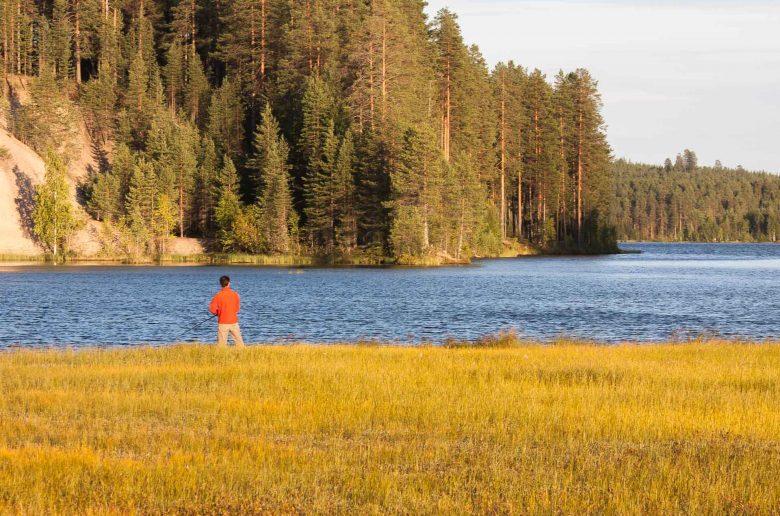
Spin fishing depends a big part on your casting technique. Try overhead throws until you feel comfortable enough for consecutive throws. The casting technique is a bit hard to describe but it all comes down to the right timing and rhythm.
In the beginning reel in at a steady pace so that your lure moves steady too. The reeling speed depends on the type of lure you use. Usually you want to give the fish a chance to react to your bait, so if you reel in to fast you might miss opportunities. Real to slow and you will not attract any fish at all or end up a the bottom. You will need to practice this a bit to get a feel for the right pace. If you feel more comfortable mix up your speeding a little bit order to imitate a sick or injured fish.
Pike is an easy fish to tackle since it attacks pretty much everything what moves through the water, especially if it is shiny and colourful. If you fish from the shore look out for reed grass or natural hidings under water. Throw your lure as close to the reeds as possible but be careful to not get stuck. Pikes usually seek out hiding points within the reeds and often wait there for hours for there pray to come bye.
Pollock or Sig is usually the easiest fish to catch from the shore especially if you are in the more northern parts of Norway. You might want to use some heavier lures that sink a bit beneath the surface. The water should be at least 3 meters but usually more is better.
Try to catch whatever you want as long as you are aware of the regulations. Fishing without permission might seem tempting in many places and if you are somewhere in the deepest wilderness no one will probably care but also face the consequences if caught and do not complain that you did not know better. Always stay away from the salmon rivers and stocked or migratory fish populations!
Cook it
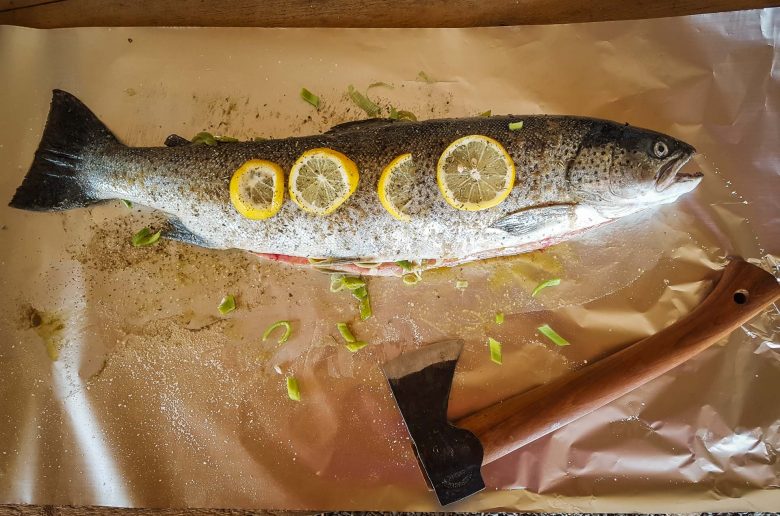
Got your fish? Congratulations, you made it! A fresh Scandinavian fish is best enjoyed grilled on your campfire. First you have to take the less pleasant action of killing, cleaning and eventually scaling your meal though – preferably quick with a hard hit on the head. Take a knife and start carefully opening up the belly and remove all the insides. Grill it and enjoy!
